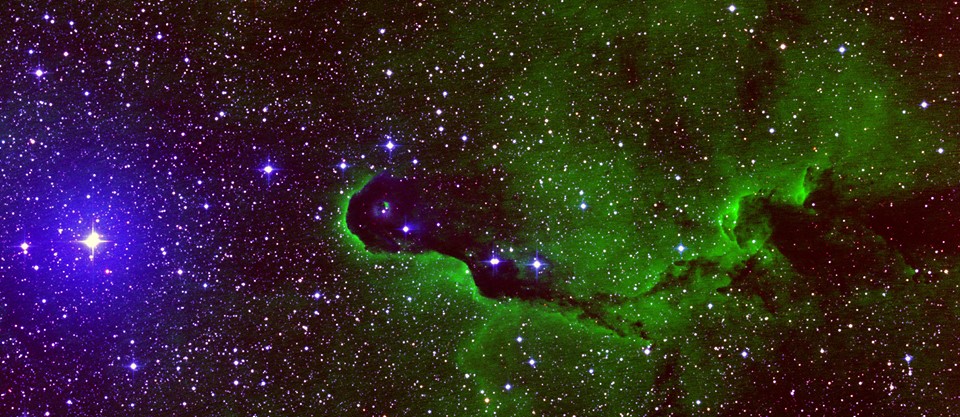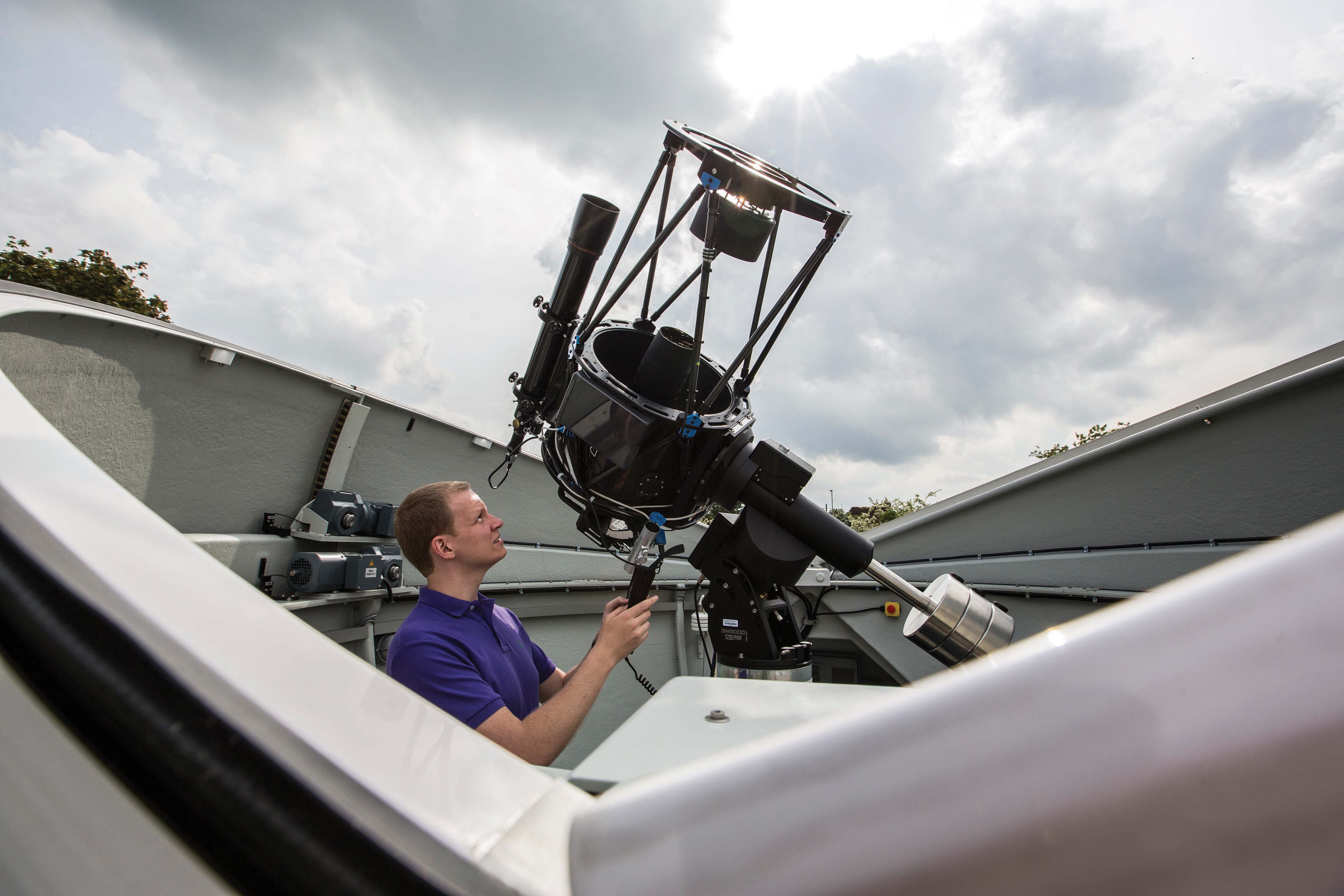These could for example be: Changes in the mass accretion rate, changes in the line of sight column density caused by material in the protostellar accretion disk, hot or cold spots and rotation of the central star, or more likely a combination of these.
All sky dome of the observatory which houses our 17″ Plane Wave Astrograph telescope. On the left you can see the weather station associated with the observatory.
We are studying the long term changes of the mass accretion rate in young stars as well as the structure and properties in the inner accretion disks using long term, high cadence, multi filter datasets. These are either taken with our in house observatory (Beacon Observatory), taken as part of our HOYS Citizen Science Project, or other publicly available datasets such as e.g. VVV(-X), GAIA, PTF, ASAS-SN or AAVSO.

Image taken with the observatory of the Elephant Trunk Nebula (IC1396A). This combines images taken in the Visual (blue channel), Halpha (green channel) and the I-Band (red channel).
